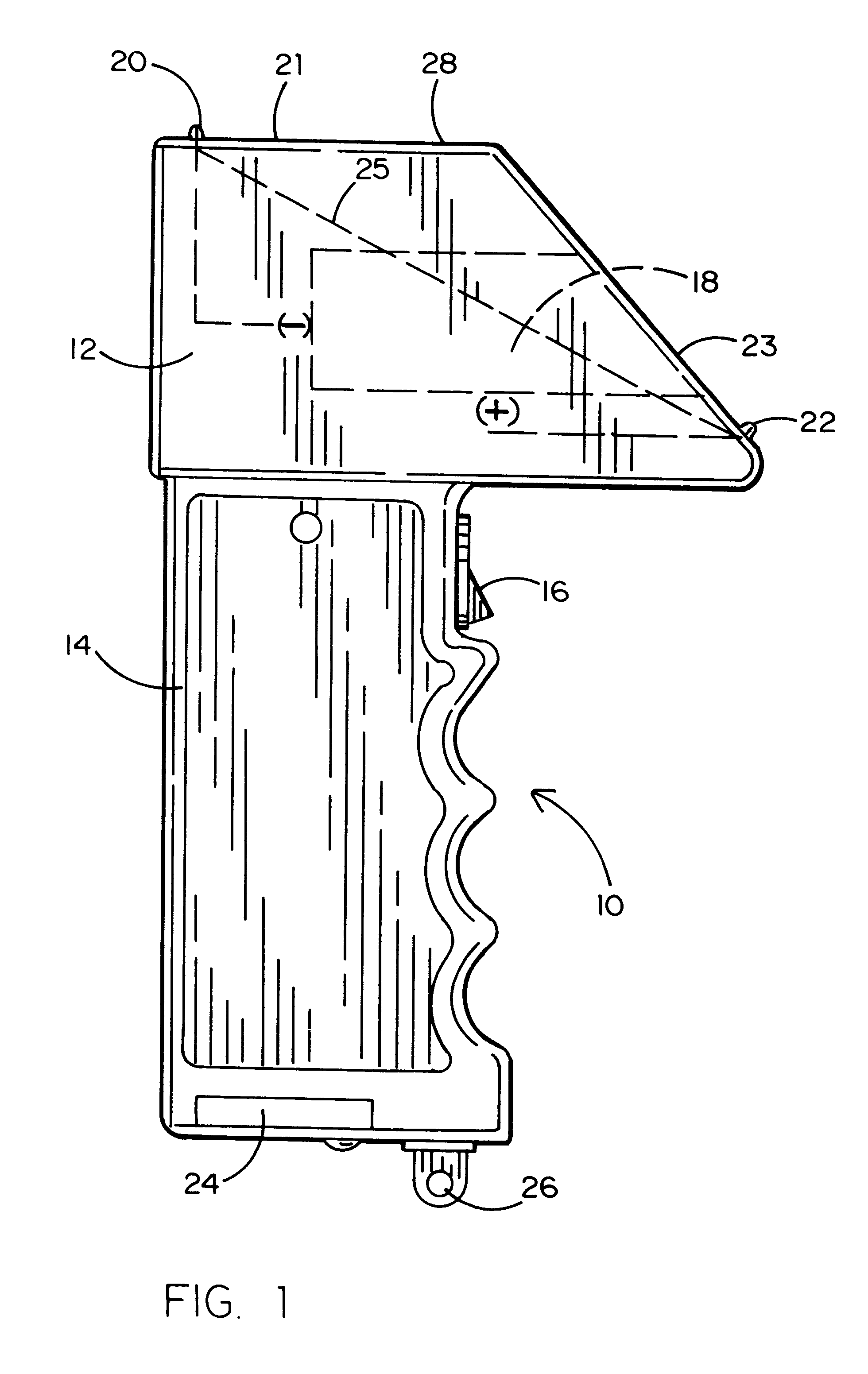Stun gun
a technology of shock weapons and immobilizers, applied in the field of shock guns, can solve the problems of ineffectiveness of shock weapons in controlling suspects an astounding 63% of the time, insufficient probe spacing of manual connection shock weapons, and sustained involuntary contraction of targets, so as to increase the discharge gap.
- Summary
- Abstract
- Description
- Claims
- Application Information
AI Technical Summary
Benefits of technology
Problems solved by technology
Method used
Image
Examples
Embodiment Construction
Referring to the accompanying figures, it will be seen that a stun gun 10 in accordance with the present invention comprises a head portion 12 and an integral handle portion 14. The stun gun electronics (not shown) are conventional and are contained within handle portion 14 where they may be selectively activated by a trigger switch 16.
This embodiment of the invention provides a launchable projectile in the form of wire-tethered darts in a conventional cartridge that is received in a cartridge receptacle 18 in head portion 12. More pertinent to the inventive aspect of the disclosed stun gun apparatus, is a pair of electrical contacts 20 and 22 projecting above respective surfaces 21 and 23 of the head portion 12. The handle portion is also provided with a battery compartment cover 24 and a wristband holder 26.
The shape of head portion 12 as seen in FIG. 1 is trapezoidal. This trapezoidal shape is characterized by a foreshortened top surface 21 (as compared to the bottom of head port...
PUM
 Login to View More
Login to View More Abstract
Description
Claims
Application Information
 Login to View More
Login to View More - R&D
- Intellectual Property
- Life Sciences
- Materials
- Tech Scout
- Unparalleled Data Quality
- Higher Quality Content
- 60% Fewer Hallucinations
Browse by: Latest US Patents, China's latest patents, Technical Efficacy Thesaurus, Application Domain, Technology Topic, Popular Technical Reports.
© 2025 PatSnap. All rights reserved.Legal|Privacy policy|Modern Slavery Act Transparency Statement|Sitemap|About US| Contact US: help@patsnap.com



